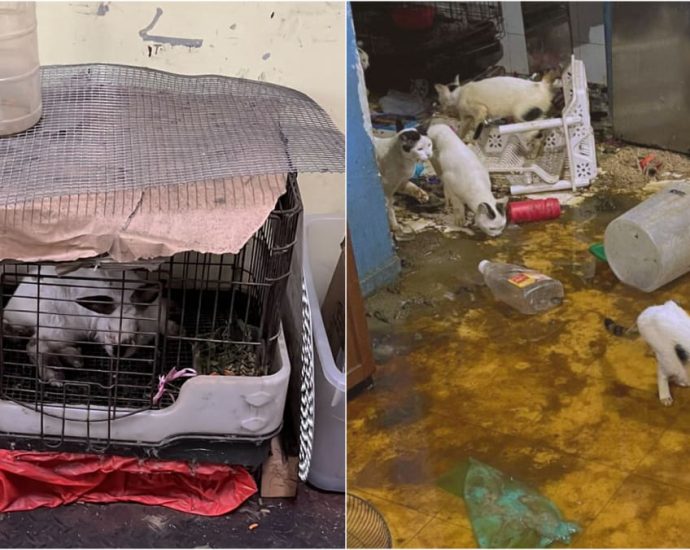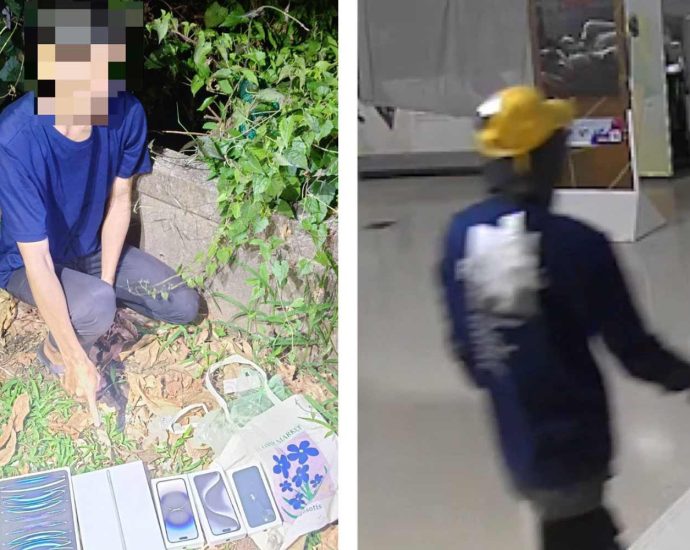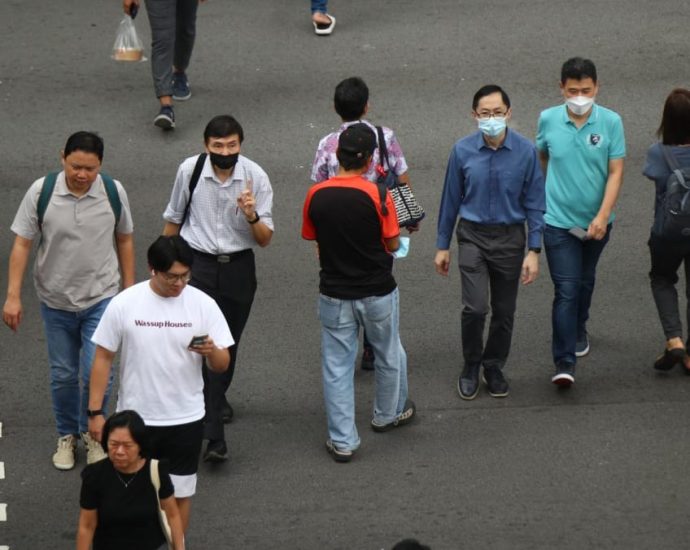Sydney Harbour shark attack victim Lauren O’Neill thanks ‘heroic’ neighbours
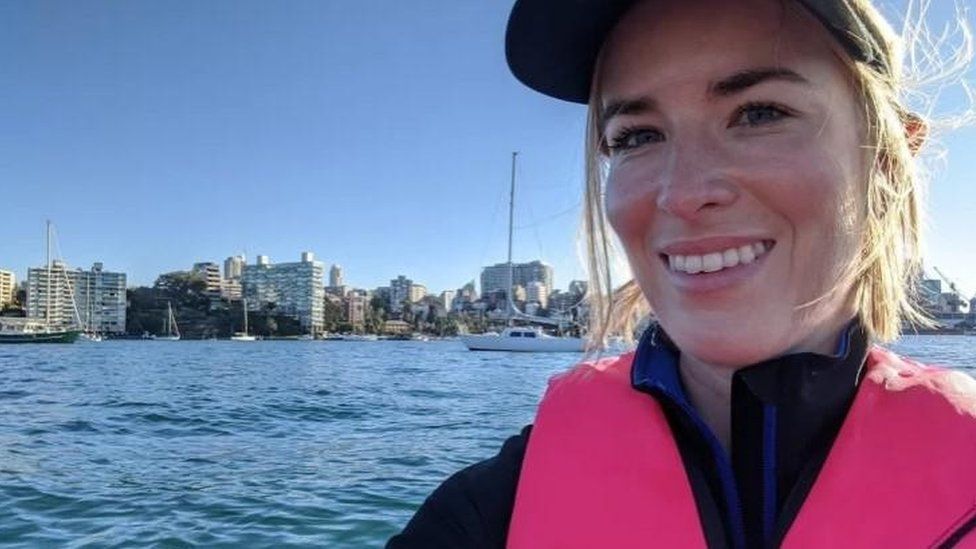 Supplied
SuppliedAn Australian woman attacked by a bull shark in Sydney Harbour has thanked her “heroic” neighbours for coming to her aid.
Lauren O’Neill was bitten during a sunset swim near a wharf on Monday.
The 29-year-old’s leg was severely injured but surgeons worked through the night to save it from amputation, according to Sydney’s Daily Telegraph.
In a statement on Wednesday, Ms O’Neill lauded the life-saving help offered by onlookers, medical staff and police.
She said she had been taking a “short dip” close to the shore in Elizabeth Bay after a hot day – as she often did – when she was attacked.
“She wishes to thank her heroic and very kind neighbours for the critical assistance they provided her,” said a statement released by the hospital where she is receiving care.
Local media have reported that the keen kayaker and swimmer lived near an ocean pool equipped with shark nets but often swam in the open water.
Witnesses have said they rushed to the scene and applied first aid after hearing her yelling. They helped Ms O’Neill out of the water and one woman – a vet – applied a tourniquet to stem the bleeding, something credited with potentially saving her life.
Ms O’Neill said she was “immensely grateful” to paramedics and police for their “swift and caring actions at the scene” as well as the medical teams treating her.
“Her likely full recovery is testament to their extraordinary skills,” the statement said.
She also thanked her loved ones and the public for their support, but requested privacy as she recovers.
Sydney Harbour is a well-known habitat for bull sharks, but attacks in the area are rare.
Experts have reiterated warnings to locals to stay out of the harbour on hot days and at dawn or dusk – times of greater shark activity.
Related Topics
SPCA sees ‘alarming increase’ in pet abandonment cases
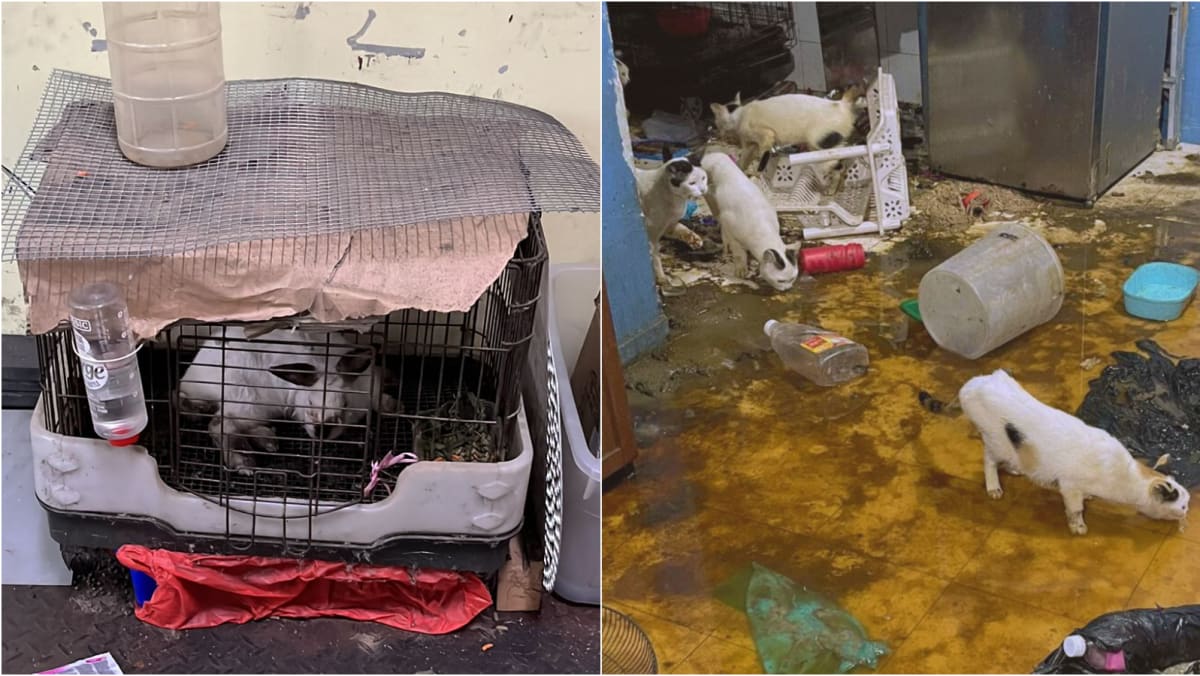
Under the Animal and Birds Act, those found guilty of animal cruelty can be jailed for up to 18 months, fined up to S$15,000, or both. Repeat offenders can face a jail term of up to three years, a fine of up to S$30,000, or both. They may face stiffer punishment if they are employed in an animal-related business.
SPCA does not have enforcement powers under the Animals and Birds Act, but it refers serious cases to the Animal and Veterinary Service (AVS) or the police.
Calling on the public to report cases of animal cruelty and abandonment, SPCA said its inspectorate plays a vital role in investigating incidents.
It added: “Although the SPCA does not have the authority to enforce laws, prosecute offenders, or remove animals from their guardians, we play a critical role in the fight against animal cruelty by gathering credible witnesses and evidence, providing guidance on animal welfare issues and providing investigative support.”
The win-win way to avoid a Taiwan war – Asia Times
After the surprise January 26-27 meeting between US National Security Advisor Jake Sullivan and Chinese Foreign Minister Wang Yi, Taiwan independence remains the most problematic issue in US-China relations.
The Taiwan problem will remain, especially since the independence-supporting Democratic Progressive Party (DPP) held Taiwan’s presidency following the island’s recent election.
Although Washington underlined its long-standing policy against Taiwan independence in response to the DPP victory, more is needed to craft a balanced Taiwan policy to achieve American interests. Instead of words alone, the United States should put its One China policy into practice to boost cross-strait deterrence and avoid a war with China.
Critically, to assure Beijing and maintain the hope of a diplomatic resolution to the Taiwan question, Washington should more publicly assure Beijing that it would accept the peaceful reunification of China and Taiwan.
To his credit, US President Joe Biden indicated this to Chinese leader Xi Jinping during their November 2023 meeting in San Francisco. Not only should Biden and his successors restate this publicly, but US government agencies should also make this an official talking point for both bilateral and multilateral engagements.
Increasing awareness of US acceptance of peaceful reunification – through joint statements, communiques, and formal records – will encourage other countries to adopt similar policies and further assure Beijing of America’s intentions. When America speaks, the Western-leaning world listens.
Through Washington’s insistence, concern over China-Taiwan ties has found its way into multilateral and bilateral diplomacy. This subsequently led to an uptick in US, European, and Indo-Pacific engagement with Taiwan and interest in Taiwan policy. More official and active US acceptance of a peaceful reunification outcome could see the West, Japan and South Korea formally adopt the policy as their own.
Providing further assurance, the White House should make clear to both Congress and Beijing that the President has the sole Constitutional authority to recognize the sovereignty of states.
The White House Counsel and the State Department’s Office of the Legal Advisor should jointly release official guidance reinforcing this, specifically citing Zivotofsky vs Kerry – whereby the Supreme Court denied Congress has a right to recognize a state’s sovereignty through law. This would show China that when a US President says the United States opposes Taiwan’s independence, he or she means it.
Moreover, Washington should reverse its trend of official visits with Taiwan, which has worsened Taiwan’s security for the sake of symbolism.
To carry this out, the United States should return to conducting relations with Taiwan primarily through the American Institute in Taiwan. This would mean avoiding sending de jure US government officials to Taiwan and keeping relations unofficial, even though the Taiwan Travel Act allows up to the highest level of official visits.
Additionally, should Congress pass any law encouraging the Taipei Economic and Cultural Representative’s Office (TECRO) in Washington to change its name to the Taiwan Representative Office, the Department of State should convey the negative implications of a name change to convince TECRO to maintain the status quo.
The State Department should advise that a name change would likely lead to trade disruptions, Beijing doubling its efforts to poach Taiwan’s remaining diplomatic allies and increased military activity around the island.
It would also likely signal to China that peaceful reunification is a dead end with the United States effectively declaring it would recognize an independent Taiwan. Of course, this would mean force is the only path to reunification.
Returning to a more unofficial relationship with Taiwan and avoiding symbolic activities would undermine China’s talking points that the United States is supporting or encouraging Taiwan’s independence forces. As a result, it would reduce the primary necessity – from a Chinese perspective – to rely more on forceful means in dealing with Taiwan.
However, Washington should pair assurance to Beijing on Taiwan with Chinese concessions on areas of US interest. These could include accelerating nuclear arms talks, trade and economic policy reciprocity and curbing economic espionage. Advancement in any of these areas would be a major win for US vital interests – far more than the cost to reassure Beijing.
By actively reassuring China and the world of its opposition to Taiwan’s independence, the United States can prolong the cross-strait peace. Beijing would have less need to use coercive measures in its relations with Taiwan with restored mutual trust in US policy, which Chinese Premier Li Qiang emphasized during his 2024 World Economic Forum address.
Concurrently, Taipei would be further constrained to maintain the non-independence status quo and avoid symbolic activities that may promote ideas of sovereignty but harm security.
Despite a more active assurance policy, US efforts ultimately underpin its One China policy and the strategic ambiguity that has contributed to cross-strait peace for decades. This policy can work together with US commitments under the Taiwan Relations Act and the Six Assurances to create a more restraint-oriented Taiwan policy.
Taiwan is the likeliest flashpoint for a US-China conflict. Establishing acceptance of peaceful reunification as official policy, doubling down on opposition to Taiwan independence and restoring prior diplomatic practices are cheap means to deter a war over Taiwan. Now is the time to change course to reassure Beijing, before it is too late.
Quinn Marschik is a contributing fellow at Defense Priorities.
Dragon spotting in Singapore: 6 places with dragon-themed decor to usher in Chinese New Year

The dragon dance party doesn’t stop there. An 88m-long LED dragon will be taking the stage at the Starlit Dragon Spectacular live performance.
The free show will be held at 7.30pm and 8.30pm from Feb 10 to 13, and Feb 16 to 18 at the Lake of Dreams of level one at the Forum.
Accompanying the dragon are five drummers symbolising the five elements in the world (Earth, Water, Fire, Air and Spirit), a soloist who will recount his narrative, a group of captivating dancers, and most importantly, the God of Fortune.
Visitors can also pose for pictures with a colourful 5m-tall dragon and eight mini dragons for free at AVE8’s Wealth Of Dragons installation.
Visit the RWS website for more details.
3. MARINA BAY SANDS
A dragon made up of 1,500 drones will soar above the Marina Bay waterfront for six days in February.
The free 10-minute drone performance, titled The Legend Of The Dragon Gate, will light up the Marina Bay sky at 8pm on Feb 6, 10, 11, 16, 17 and 18 as part of a partnership between the Singapore Tourism Board, Marina Bay Sands and UOB.
Following the story of the mythical Dragon King, the show will feature themes of family reunion and perseverance, as well as symbols of luck and prosperity.
Student arrested for breaking into Big C at night, stealing iPhones
PUBLISHED : 31 Jan 2024 at 11:41

NAKHON PHANOM: An engineering student, 21, was arrested in Muang district on Tuesday night for allegedly stealing iPhone smartphones and iPad tablet computers worth about 200,000 baht from a Big C store.
The theft happened at Big C’s Nakhon Phanom branch at about 3am on Tuesday.
CCTV captured the thief, his face covered, trying in vain to break into a gold shop and an ATM.
The thief then turned to a mobile phone shop where he took two iPad tablet computers and four iPhone smartphones. The suspect left the store through its fire exit.
Pol Maj Gen Thawatchai Thungpao, chief of Nakhon Phanom police, said a mobile phone dealer later informed police that a man had appeared trying to sell iPhones, arousing suspicion.
Police then arrested the suspect at a rented room in Muang district. The 21-year-old man is a second-year engineering student at a local university.
Identified only as Tinakorn, a native of Renu Nakhon district, the suspect reportedly told police he stole the products because he had debts from online gambling. He entered the store through its roof structure and climbed down to the floor.
Construction work in Clementi for Maju MRT station on Cross Island Line to start in Q2
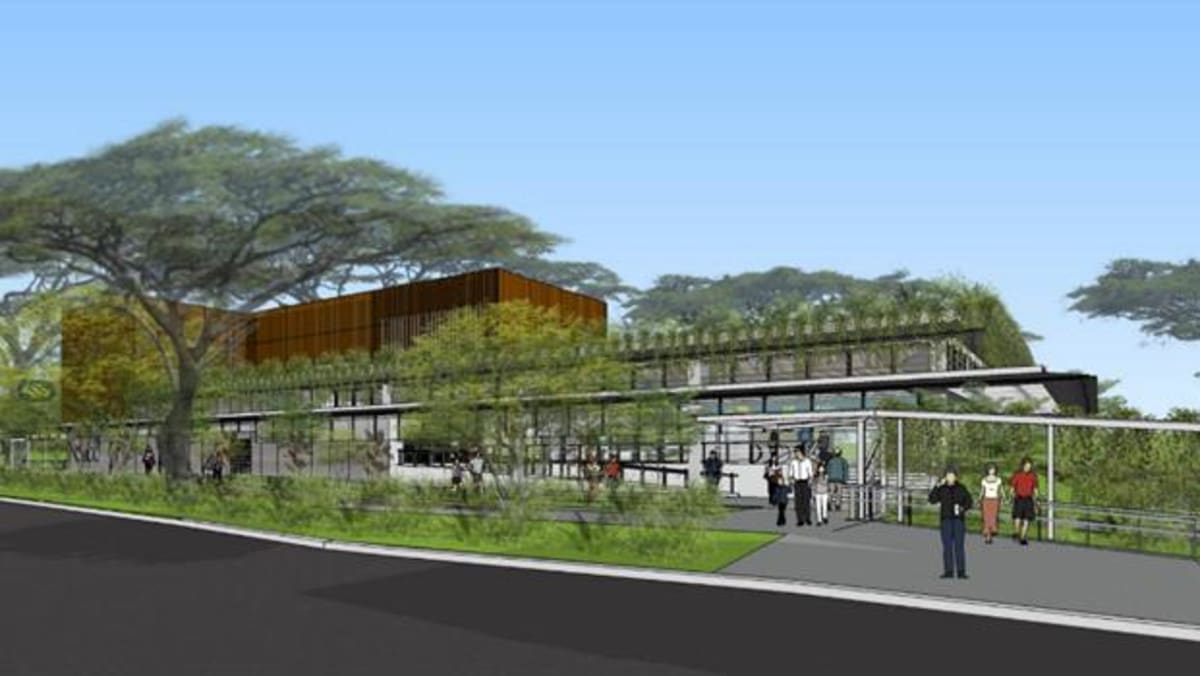
SINGAPORE: Construction work for Maju MRT station on the upcoming Cross Island Line (CRL) is set to start in the second quarter of this year, with traffic diversions expected.
The new underground station is along Clementi Road, near the Singapore Institute of Management, Singapore University of Social Sciences and Ngee Ann Polytechnic.
The CRL is Singapore’s eighth MRT line.
Passenger service for phase 2 of the MRT line, which comprises six underground stations including Maju, is expected to start in 2032.
The Land Transport Authority (LTA) said on Wednesday (Jan 31) that the construction work for Maju station is expected to be “challenging”, with undulating terrain and mixed ground conditions at the location.
“For safety and ground stability, earth retaining and stabilising structures will be implemented before excavation and construction works for station structures commence,” said the authority.
Traffic and utilities diversions will be carried out in phases during the works, LTA added.
ENVIRONMENTAL IMPACT
As the construction will take place near Clementi Forest, LTA had earlier conducted an Environmental Impact Assessment.
It included engagements with nature groups on the potential biodiversity issues and proposed measures to manage the environmental impact of works.
LTA said it will continue to engage nature groups and other stakeholders to keep them up to date with the construction progress and mitigation measures.
“These measures include establishing a flora and fauna monitoring and management programme, as well as regular inspections of hoardings, drains and earth control measures,” it added.
The challenge of reviving US chip industry – Asia Times
The semiconductor industry was invented and developed in the United States, yet most of the highest-performance chips are now produced by Taiwan Semiconductor Manufacturing Company (TSMC), with more than US$70 billion of annual revenues solely from chip manufacturing of devices designed by others.
Such devices are key enablers of all high-performance electronic systems. Faced with defense-system concerns, the US government is providing $50 billion to fund the most advanced new chip production plants domestically. The idea is to revive high-performance chip production in the US.
Based on my experience, I believe that high-end chip manufacturing is the most challenging in the world. It costs billions of dollars to build such plants, but that’s only the beginning: The qualified staff to operate them cannot be purchased – they need to be trained and developed in a production environment.
Such a program will not succeed without a major increase in the number of sophisticated technologists capable of operating such plants.
TSMC’s much-heralded American plants, to be built with US government subsidies, have been delayed repeatedly – something that doesn’t happen in Taiwan. A plant scheduled to open in 2026 won’t be operational until 2027 or 2028, TSMC said on January 19. The opening of another plant was delayed to 2025 from a planned 2024 opening. The company blamed a shortage of skilled workers.
I have been involved in the design and operation of chip plants since the 1960s. They require uniquely qualified people trained over periods of not months but years. The equipment to build such factories is commercially available and is extremely complex and automated.
But the key manufacturing enabler is the people who operate it. It takes years to develop such expertise, and it is rare in the United States, as such manufacturing has largely gone overseas, leaving Intel as the only domestic manufacturer of high-end chips.
The United States still leads in the design of the highest-performance chips, and the recent success of Nvidia with leadership in AI-enabling chips (produced by TSMC) is an indication.
With the exception of Intel, the US industry was happy to outsource the production of the most sophisticated integrated circuits to TSMC, which proved to be a reliable leading-edge production company.
Gradually, TSMC acquired the facilities and skill to produce the best leading-edge devices designed by companies globally. It is today a very profitable high-volume chip manufacturing technology leader. With scale comes market position and economics of production, and the company is very profitable. Any potential competitor has many barriers to overcome, and the biggest ones are in management and staff expertise.
Manufacturers’ challenges
What makes high-end chip manufacturing so challenging are two factors. The first is the shrinking dimension of transistor core devices that are now in the low-nanometer range (approaching interatomic dimensions), and second, the need to manage a production process where different very thin chemical materials are deposited on a 12-inch-diameter (305-millimeter) silicon base.
Typically, more than 100 such films must be deposited and patterned using a variety of techniques, and the specific configurations must be controlled for different device structures. Within these three-dimensional structures are patterns that need to be created for circuit interconnections.
So you have a production process that requires both thin-material technologies and accurate patterning of near-atomic dimensions. A finished chip may have several billion transistors interconnected per square inch of surface.
Controlling such a production process is arguably the most difficult manufacturing problem in the world. Different products require different production steps that number in the thousands from start to finish. There can be no errors in the production process, as errors will impact the performance of the devices.
You can imagine the difficulty of entering such a challenging production business. It is no wonder that chip design companies have chosen to avoid owning such production plants when TSMC does such a great job economically.
And now comes the US government offering financial support for entrants into this production business. Only the hardiest will make the commitment, but staffing will be the biggest challenge.
Operating a chip plant with this complexity requires people with a high level of technology skills. Above all, it requires people well-schooled in the chemical, mechanical, and electronic technologies underlying the production process.
In a company like TSMC, it is production technologists that are the ultimate decision-makers because they best understand the tradeoff between process yield and device performance. It is that effective decision process that is reflected in the company’s production performance and cost.
Is there a way to meet the US government’s goal? Only if a serious investment in the right educational programs is made, possibly through state-funded community-college training with rigorous standards.
This is not a short-term endeavor. I believe that training for the most modern manufacturing industries will, in general, benefit the US economy and reverse what has been a continuing decline in domestic high-technology industries.
The combination of capital and a highly trained workforce is needed. Without much more of the right vocational education, US taxpayers’ money will be wasted.
Henry Kressel is an inventor, technologist and author, as well as a long-term private equity investor in technology companies.
Retrenchments in Singapore more than doubled in 2023: MOM report
EMPLOYMENT Total employment, excluding migrant domestic workers, rose by 8,400 in the final quarter of the year. It was also the ninth consecutive quarter that total employment had increased. MOM noted that the growth in total employment has moderated “significantly” for both residents and non-residents as compared to previous quarters. “ThisContinue Reading
Dissident Russian band remain in Bangkok prison, fearing extradition
PUBLISHED : 31 Jan 2024 at 11:13
UPDATED : 31 Jan 2024 at 15:38

A Russian-Belarusian rock band has found itself in a precarious situation as its members languish in a Bangkok prison following their arrest while performing in Phuket, AFP reported, as an international clamour continued against their potential deportation to Russia.
Authorities apprehended members of the Bi-2 band, who have vocally opposed President Vladimir Putin and his involvement in the Ukrainian conflict, following their concert in Phuket last week. Human Rights Watch (HRW) warns of the dire consequences they could face if sent back to Russia, citing statements from a Kremlin spokesperson accusing the band of supporting terrorism.
In a recent update on the band’s official Telegram channel, it was revealed that singer Egor Bortnik, also known as Lyova, has departed Thailand for Israel, leaving the rest of the group detained in a cramped cell alongside scores of others.
Officials acknowledge the arrest of “seven or eight” individuals for performing without proper work permits, hinting at potential deportation. According to a police source, “four or five” detainees are currently held in a Bangkok detention centre.
“There’s grave concern Russian authorities seek to punish these artists for speaking out against the Kremlin & criticizing Russia’s war vs Ukraine. Thai gov’t should not permit deportation of these activists to place where likely to face persecution”: @hrw https://t.co/plplq1busx pic.twitter.com/N7CkiQPkR1
— Phil Robertson (@Reaproy) January 30, 2024
The band members may be extradited if they broke the law, Foreign Minister Parnpree Bahiddha-Nukara said later on Wednesday.
“If people do nothing wrong, we cannot extradite them,” he said.” This is subject to international law. But if they are wrongdoers, action must be taken.” Mr Parnree said the National Security Council was finding facts about the matter.
However, Thai media reported that a senior immigration police official had cast doubt that any band members would be extradited. “Those wanted for political or other reasons won’t be sent back to Russia,” Deputy Chief of Immigration Police Pol Maj Gen Pantama Nutnarot reportedly said.
One of the seven band members had already been deported to a third country, he reportedly added, while the others can request help from the UNHCR and if they hold dual nationality, can seek to return to the other country of their citizenship.
The organisers, VPI Event, claimed they had secured all necessary permits, but the band was issued tourist visas erroneously, resulting in their detention. VPI asserted that immigration officers focused solely on penalising the artists, ignoring the usual protocol of contacting event organisers in such situations, AFP reported.
Allegations have surfaced of pressure exerted by the Russian consulate to thwart the band’s performances since December. VPI has lamented the obstacles encountered in securing the artists’ release, citing unprecedented challenges at every turn while expressing hope for a swift resolution.
While several members holding dual nationality, including Israeli and Australian citizenship, the band enjoys significant recognition in Russia. Their stance against supporting the war in Ukraine led to the cancellation of numerous concerts in 2022, prompting their departure from Russia.
A co-founder of the band has publicly criticised the Putin regime, expressing profound disillusionment and accusing the longstanding leader of causing harm to Russia. HRW has underscored Russia’s track record of targeting dissenters abroad and implored Thai authorities to refrain from deporting the band members, fearing repercussions for their outspoken criticisms.
Elaine Pearson, Asia director at Human Rights Watch, called for the release of the detained members, saying they should be allowed to depart freely and asserting that deportation to Russia could subject them to arrest or worse, given their outspoken opposition to President Putin and Russia’s actions in Ukraine.
Exiled Belarusian opposition leader Svetlana Tikhanovskaya urged the government not to deport the band to Russia.
“I’m worried about the situation involving the Belarus-born rock band Bi-2,” she wrote on X, formerly Twitter.
“It’s now absolutely clear that Russia is behind the operation to deport the band.”
I’m worried about the situation involving the Belarus-born rock band Bi-2. It’s now absolutely clear that Russia is behind the operation to deport the band. I urge the Royal Thai Government & democratic nations to find a solution to ensure the freedom of these brave musicians. pic.twitter.com/IJeQApQxbm
— Sviatlana Tsikhanouskaya (@Tsihanouskaya) January 30, 2024
[embedded content]
Dissident Russian band remain in Bangkok prison, fearing deportation
PUBLISHED : 31 Jan 2024 at 11:13

A Russian-Belarusian rock band has found itself in a precarious situation as its members languish in a Bangkok prison following their arrest while performing in Phuket, AFP reported, as an international clamour continued against their potential deportation to Russia.
Authorities apprehended members of the Bi-2 band, who have vocally opposed President Vladimir Putin and his involvement in the Ukrainian conflict, following their concert in Phuket last week. Human Rights Watch (HRW) warns of the dire consequences they could face if sent back to Russia, citing statements from a Kremlin spokesperson accusing the band of supporting terrorism.
In a recent update on the band’s official Telegram channel, it was revealed that singer Egor Bortnik, also known as Lyova, has departed Thailand for Israel, leaving the rest of the group detained in a cramped cell alongside scores of others.
Officials acknowledge the arrest of “seven or eight” individuals for performing without proper work permits, hinting at potential deportation. According to a police source, “four or five” detainees are currently held in a Bangkok detention centre.
“There’s grave concern Russian authorities seek to punish these artists for speaking out against the Kremlin & criticizing Russia’s war vs Ukraine. Thai gov’t should not permit deportation of these activists to place where likely to face persecution”: @hrw https://t.co/plplq1busx pic.twitter.com/N7CkiQPkR1
— Phil Robertson (@Reaproy) January 30, 2024
Despite claims by the organisers, VPI Event, of securing all necessary permits, the band was issued tourist visas erroneously, resulting in their detention. VPI asserted that immigration officers focused solely on penalising the artists, ignoring the usual protocol of contacting event organisers in such situations, AFP reported.
Allegations have surfaced of pressure exerted by the Russian consulate to thwart the band’s performances since December. VPI has lamented the obstacles encountered in securing the artists’ release, citing unprecedented challenges at every turn while expressing hope for a swift resolution.
While several members holding dual nationality, including Israeli and Australian citizenship, the band enjoys significant recognition in Russia. Their stance against supporting the war in Ukraine led to the cancellation of numerous concerts in 2022, prompting their departure from Russia.
A co-founder of the band has publicly criticised the Putin regime, expressing profound disillusionment and accusing the longstanding leader of causing harm to Russia. HRW has underscored Russia’s track record of targeting dissenters abroad and implored Thai authorities to refrain from deporting the band members, fearing repercussions for their outspoken criticisms.
Elaine Pearson, Asia director at Human Rights Watch, called for the release of the detained members, saying they should be allowed to depart freely and asserting that deportation to Russia could subject them to arrest or worse, given their outspoken opposition to President Putin and Russia’s actions in Ukraine.
[embedded content]


